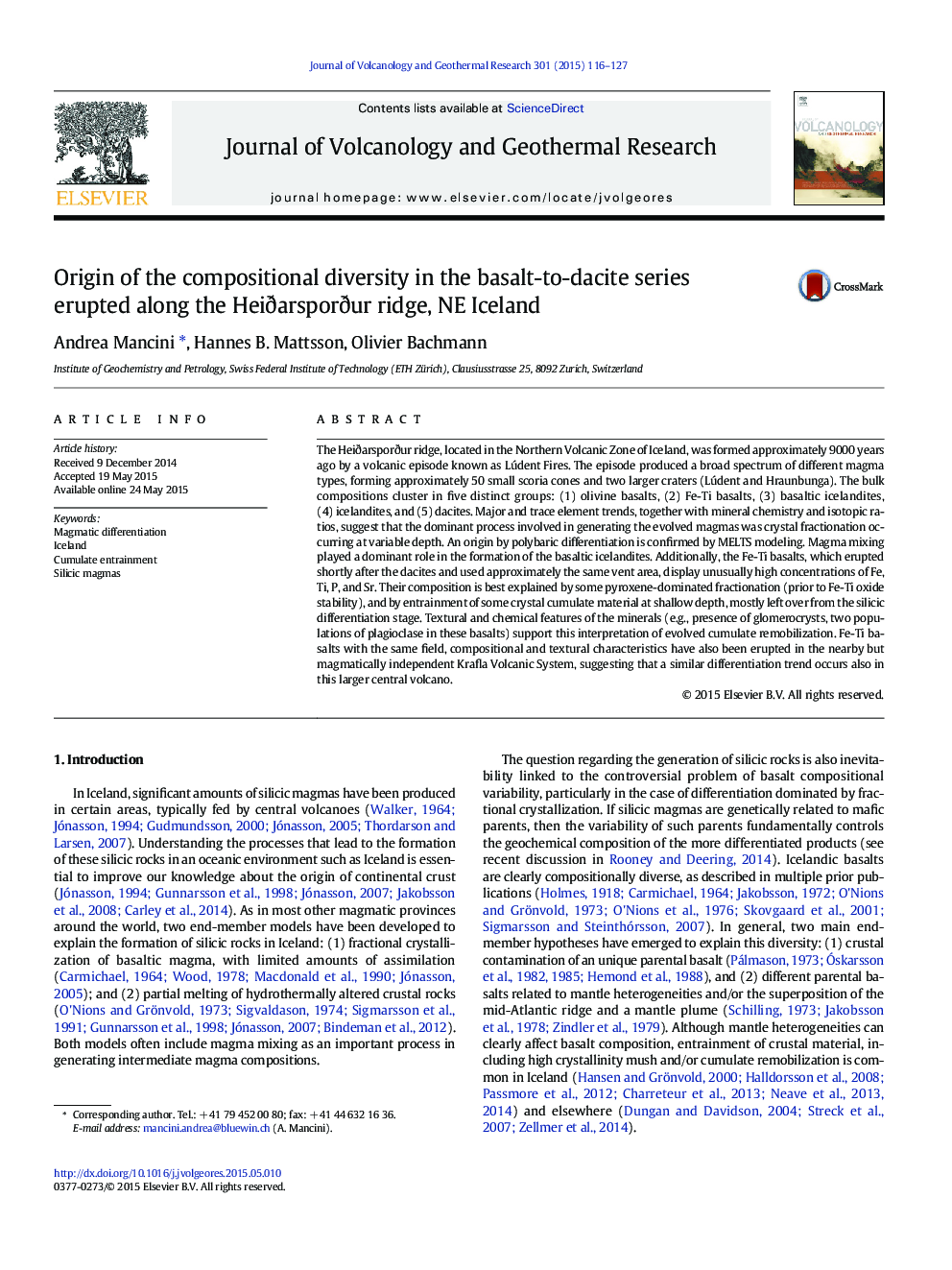| Article ID | Journal | Published Year | Pages | File Type |
|---|---|---|---|---|
| 4713118 | Journal of Volcanology and Geothermal Research | 2015 | 12 Pages |
•Volcanic units from the 9000 BP Heiðarspordur ridge span a wide range of composition.•There are clear gaps between compositional groups.•Evolved basalts to dacites were mostly produced by polybaric crystal fractionation.•Interaction between icelandites and basalts produced mingled basaltic icelandites.•Recycled silicic cumulate was involved in generating evolved basaltic composition.
The Heiðarsporður ridge, located in the Northern Volcanic Zone of Iceland, was formed approximately 9000 years ago by a volcanic episode known as Lúdent Fires. The episode produced a broad spectrum of different magma types, forming approximately 50 small scoria cones and two larger craters (Lúdent and Hraunbunga). The bulk compositions cluster in five distinct groups: (1) olivine basalts, (2) Fe-Ti basalts, (3) basaltic icelandites, (4) icelandites, and (5) dacites. Major and trace element trends, together with mineral chemistry and isotopic ratios, suggest that the dominant process involved in generating the evolved magmas was crystal fractionation occurring at variable depth. An origin by polybaric differentiation is confirmed by MELTS modeling. Magma mixing played a dominant role in the formation of the basaltic icelandites. Additionally, the Fe-Ti basalts, which erupted shortly after the dacites and used approximately the same vent area, display unusually high concentrations of Fe, Ti, P, and Sr. Their composition is best explained by some pyroxene-dominated fractionation (prior to Fe-Ti oxide stability), and by entrainment of some crystal cumulate material at shallow depth, mostly left over from the silicic differentiation stage. Textural and chemical features of the minerals (e.g., presence of glomerocrysts, two populations of plagioclase in these basalts) support this interpretation of evolved cumulate remobilization. Fe-Ti basalts with the same field, compositional and textural characteristics have also been erupted in the nearby but magmatically independent Krafla Volcanic System, suggesting that a similar differentiation trend occurs also in this larger central volcano.
